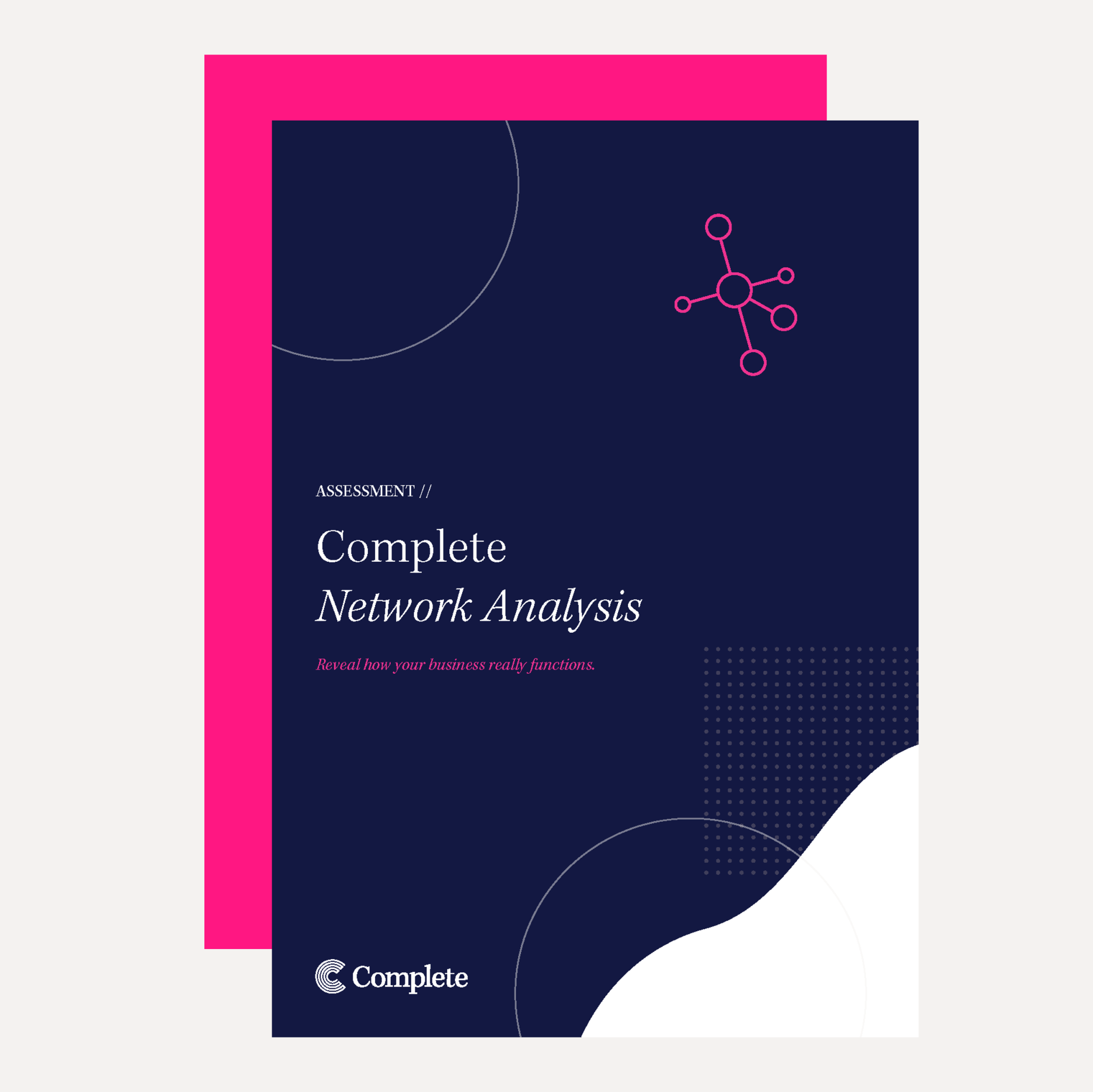“Well he’s supposed to connect across the departments, he is the Chief Innovation Officer!” Mark said incredulously.
Mark* is our sponsor at one of the world’s biggest global distribution system operators and he could not believe what he was seeing in the data. We were feeding back the results of our Complete Network Analysis assessment. Mark’s reaction has become a common experience for us in the ONA team.
A rise in interdependencies between business functions and recent decades of technological progress have converged to change the way organisations operate. Connectivity is no longer defined by reporting lines – employees connect up, down and across departmental boundaries for functional, social and strategic reasons. This interconnectivity is not reflected in the traditional organisation structure and, if anything, is hindered by it.
The connections between people constitute networks which are critical for the operational and strategic performance of the organisation. Networks drive collaboration and information flow within an organisation and are a source of energy and support for employees. Networks also cultivate agility and trust within the system and help employees stretch their thinking. Networks capture, in real time, how an organisation operates, and that is often different from the formal organisational structure.
These networks of connections go undetected when looking through the framework of organisational structure. Complete Network Analysis allows us to map these networks and show how an organisation is operating in reality.

The reality of organisational structures and networks can be revelatory for many leaders and Mark was no exception. Mark discovered that the Chief Innovation Officer of the business was operating in a silo and not providing stretch (inspiring ideas in others) to the rest of the organisation. We also identified for Mark two key people who were providing stretch across different parts of the organisation. These two hidden influencers were not part of the traditional organisational hierarchy and as such invisible to someone looking at the organisation through the traditional organisational structure. These hidden influencers derive their influence from their position in the organisational network. They act as bridges between different parts of the organisation, and as bridges they are responsible for information flow and building trust and support.
It’s not just at an organisational level that Complete Network Analysis can offer great insights, at departmental levels too, Complete Network Analysis reveals the real patterns of interaction between different divisions and departments. A formal organisation structure describes where connectivity should exist between the departments, but not where is really exists. We often find that departments either do not connect to each other at all or rely on just one individual (a bridge) for their connectivity.
Depending on the context, a single bridge may not be an issue, but there is always a risk of these bridges turning into bottlenecks as we found in the case of Mark’s organisation. Mark was surprised to find that the Solutions and Customer Sales and Support teams relied on one individual in a key leadership position to connect with each other and there was almost no connectivity between the two departments at lower work levels. This is not sustainable as such excessive functional demand on one individual has the potential for negative consequences in terms of wellbeing and attrition.
Complete Network Analysis is not all about discovering low levels of connectivity between people and departments, in some organisations we also see strong levels of connectivity where we would not expect it, such as between Marketing and Research & Development. In the case of Mark’s organisation, the strong connectivity between Marketing and Research & Development was a reflection of their co-location but it can also be a result of other factors, such as leadership team initiatives to encourage closer co-operation. One key actionable insight from such cases of strong connectivity is to learn from the two teams and replicate their behaviour across the organisation.
Modern organisations have transformed from being rigid organisational structures made up of departments and divisions to fluid networks of individuals and relationships. The key now is for leaders to understand and uncover the networks within their organisations so that they can leverage the power of these relationships and transform their business. ONA is an essential tool in understanding the modern organisation and thriving in an increasingly fast-paced and agile world.
*names have been changed to maintain confidentiality



























